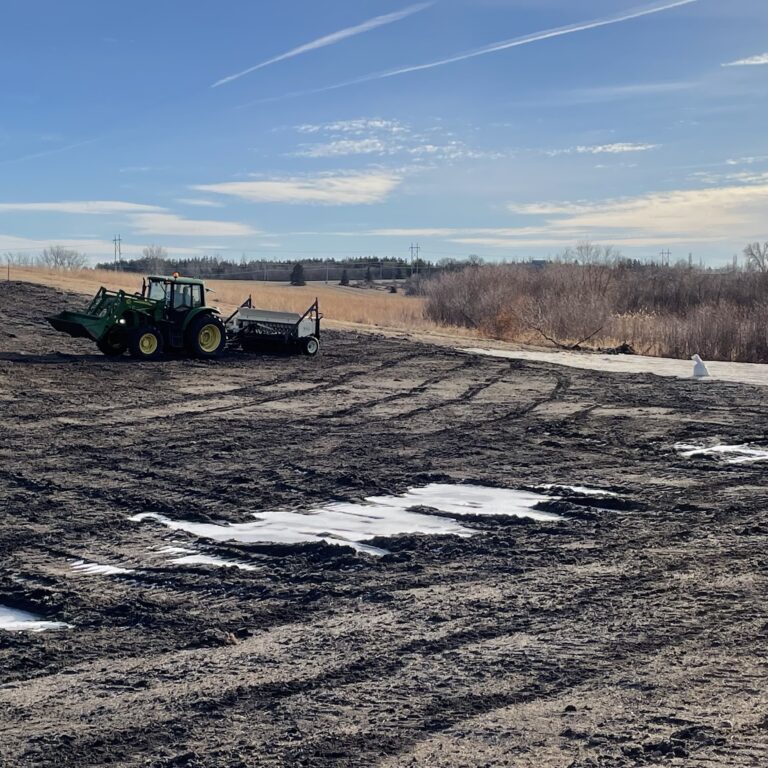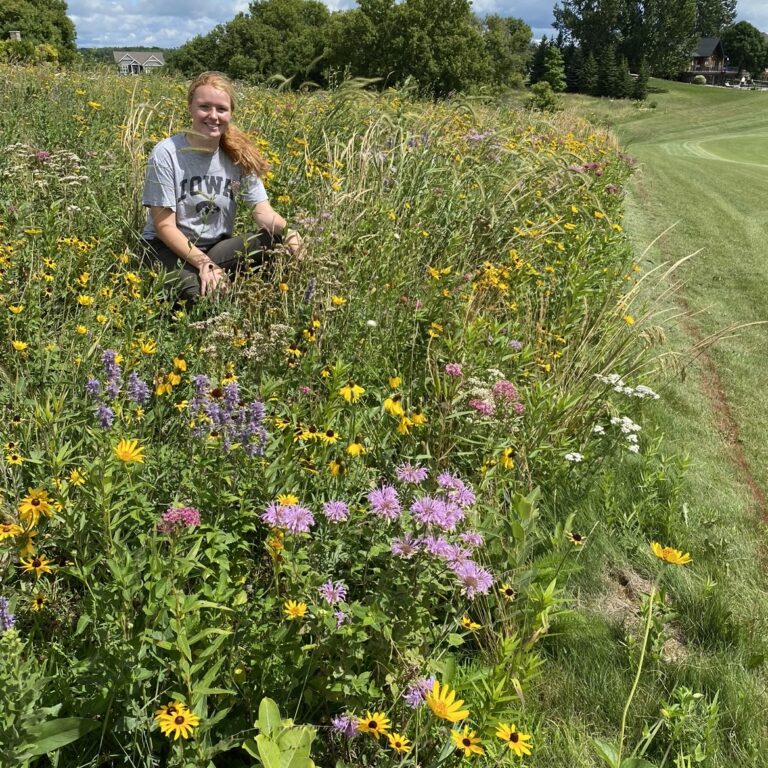Ecological Habitat Areas
Cost-effective, ecologically valuable plantings using highly diverse, local ecotype seed in low-diverse grasslands or urban environments
Ecological Habitat Areas are designed to provide habitat and floral resources for pollinators in locations where the existing habitat is grass-dominated. Our first Ecological Habitat Areas (EHA) were implemented in conjunction with Wildlife Forever and the U.S. Fish and Wildlife Service Fergus Falls Wetland Management District. An EHA may be any size, from a small prairie garden in a city park, or large strips of floral resources through a low-diverse grassland habitat.
Restoring ecological function by planting in small areas can provide a solution to the problem of limited seed sources and resulting high cost of local wild seed, while providing excellent pollinator, bird, and wildlife habitat. Intentional planting designs create variation in habitat across an otherwise homogeneous landscape. The ecological benefits that come with using diverse, local ecotype plants in habitat restoration are clear with the amount and diversity of insect life that can be observed in an EHA. The extent of these benefits, including effects on grassland birds, will need to be quantified through research.
EHAs in rural areas are designed to be offset from roads to avoid potential weed complaints during establishment. This is an important benefit for land managers who have limited time to deal with the amount of inquiries that result from native prairie establishment projects.
Benefits of local ecotype seed
UPF uses our own seed mixes built from combine harvests of multiple native prairies and hand-picked seed. Seed used in EHA plantings should originate from recently burned native prairies near the planting site when possible. Local ecotype plants are best adapted to local soil, climate, hydrology, and variable day length throughout the growing season. They help ensure that bloom periods will coincide with local pollinators, which support the entire prairie food chain. Using local ecotype plants also ensures pollination and seed development, which helps sustain plant populations on the landscape.
Once established and maintained with prescribed fire, EHAs can serve as a seed source that helps contribute to further restoration of new sites. EHAs planted at the Prairie Wetlands Learning Center in Fergus Falls, MN were used as a seed source for their greenhouse program in 2023, and they did not purchase seed from outside sources. This model of using EHAs as a supplemental seed source can be replicated by UPF on a larger scale and can contribute to our efforts in Making Prairie Common Again.











